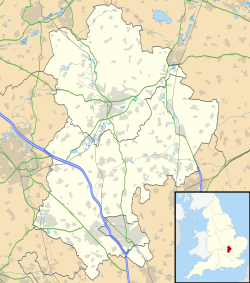| Pegsdon | |
|---|---|
 The "Live and Let Live" pub, Pegsdon | |
Location within Bedfordshire | |
| OS grid reference | TL117306 |
| Civil parish | |
| Unitary authority | |
| Ceremonial county | |
| Region | |
| Country | England |
| Sovereign state | United Kingdom |
| Post town | HITCHIN |
| Postcode district | SG5 |
| Dialling code | 01462 |
| Police | Bedfordshire |
| Fire | Bedfordshire |
| Ambulance | East of England |
| UK Parliament | |
Pegsdon is a hamlet located in the Central Bedfordshire district of Bedfordshire, England. It is part of the Shillington civil parish, and is almost encircled by the county border with Hertfordshire.
Contents
Pegsdon Hills are located south and east of Pegsdon. They form the north-eastern end of the Chiltern Hills, and are managed as a nature reserve by the Wildlife Trust for Bedfordshire, Cambridgeshire and Northamptonshire. [1] They adjoin Deacon Hill, and Deacon Hill and half of Pegsdon Hills are designated a Site of Special Scientific Interest. [2] [3]
Knocking Hoe is accessed by a footpath from Hitchin Road. It is a national nature reserve [4] and a Site of Special Scientific Interest. [5] [6]
